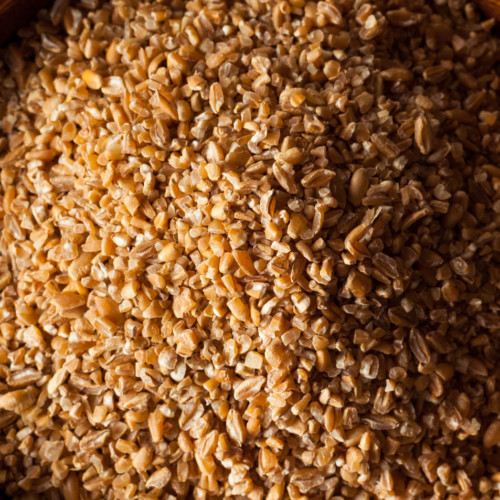
Cracked Wheat
What is Cracked Wheat?
Cracked wheat is a whole grain product made by grinding wheat berries into coarse particles larger than flour. It is a versatile product used in many traditional Mediterranean, North African and Western dishes and baked goods.
Incorporating this ingredient into baked goods provides:
- Unique texture and distinct nutty flavor
- Boosting fiber content
Origin
Similar to other wheat-based products, cracked wheat is believed to have originated in the Levant and some Mediterranean countries including Lebanon, Israel and Turkey. Currently, the popularity of this ingredient is growing throughout the world. It is being produced and consumed by many populations—mainly health-conscious groups.
Function
Due to the limited processing requirements, it is conceivable that cracked wheat can provide the same nutritional health benefits as their wheat source. For example, when used in cookies it adds fiber, folate, iron, calcium, vitamins, etc.
Fine cracked wheat can be used to replace some or all of the wheat flour in some baked goods. Because this wheat is not usually precooked, it may require soaking in water for a few hours before adding to bread or other products.
In addition to its ease of preparation, it can enhance the texture and impart crunchiness to many food recipes and baked goods.
Commercial production
Production of cracked wheat does not require elaborate processing. Commercially, it is manufactured by milling raw hard wheat berries, that have been cleaned and husked, into smaller pieces and further sizing or screening. Three sizes are typically produced: fine, medium and large size granules. This process preserves the nutrient- and fiber-rich bran and germ layers and reduces cooking time.
Composition and nutrition
Nutrient in cracked wheat/ 100 g:2
| Carbohydrate | 75 g |
| Protein | 12.5 g |
| Fiber | 12.5 |
| Total lipid | 1.25 g |
| Calcium | 50 mg |
| Iron | 4.5 mg |
| Energy | 350 kcal |
Wheat is naturally high in fiber and important micronutrients such as minerals and phytochemicals.
Due to the whole grain nature, cracked wheat intake is considered a healthy choice for consumers interested in reducing their risk of many chronic diseases, such as cardiovascular disease, diabetes, obesity, inflammation and cancer, etc.
Application
One of the most common applications of this form of wheat is its use as base for products such as couscous and served alongside vegetables or meats.
In cereal grain-based goods, it can be used in:
- Breads
- Grain pilafs
- Multi-grain bread
- Muffins
- Pancake
- Pastries
- Porridge
- Other grain dishes
- Replacement for rice
- Accompanying meats and chicken
- Cooking in hot breakfast porridge
- Cooking in a dessert
FDA regulation
As a cereal flour, it is regulated by FDA under 21CFR137.190.3
References
- Cooking With Grains: Bulgur, Cracked Wheat, Wheat Berries. https://www.drweil.com/diet-nutrition/cooking-cookware/cooking-with-grains-bulgur-cracked-wheat-wheat-berries/. Last accessed by Fe 25. 2020.
- Cracked wheat. Accessdata. Fda. gov. April 01. 2019. https://fdc.nal.usda.gov/fdc-app.html#/food-details/473921/nutrients. Last accessed by Fed 25. 2020.
- CFR – Code of Federal Regulations Title 21. Accessdata. Fda. gov. April 01. 2019. https://www.accessdata.fda.gov/scripts/cdrh/cfdocs/cfcfr/CFRSearch.cfm?fr=137.190. Last accessed by Fed 25. 2020.

